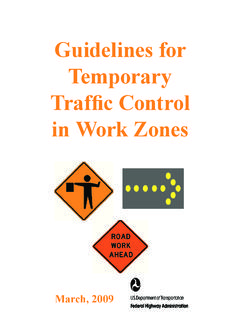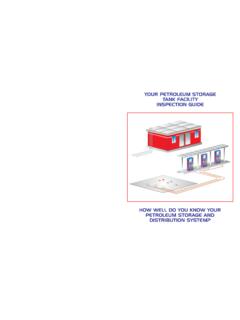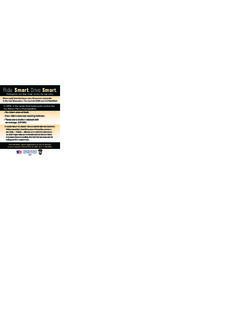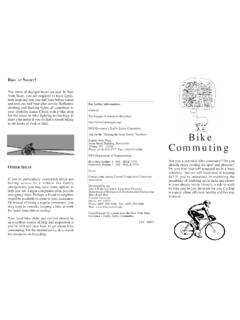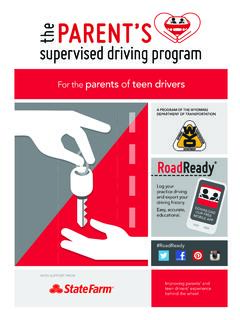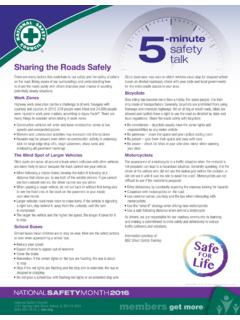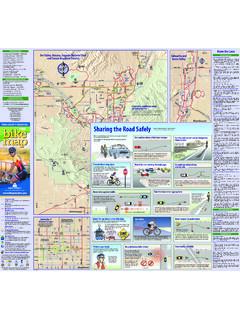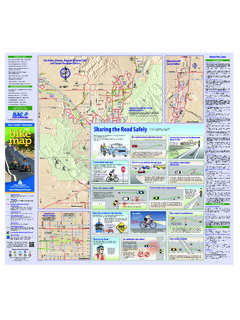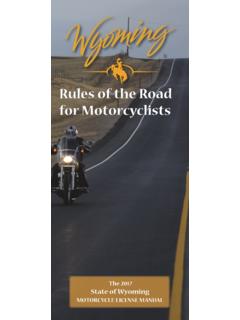Transcription of TECH BRIEF 2014-5 Sharing the Road for Motorists ...
1 TECH BRIEF 2014-5 Sharing the road for Motorists , Pedestrians and CyclistsWhen we look at roadway safety much of the concern is for vehicle safety. However in many cases a vehicle must share the road with pedestrians and cyclists due to the absence of the necessary infrastructure for them. Many local roads do not have adequate width for separate travel areas for all users which is a safety concern. The FHWA has identified both pedestrians and cyclists as vulnerable road users, and Connecticut has introduced the Share the road campaign. Guidance is given for how each user can help in Sharing the Share the road program strives to improve the knowledge of all roadway users Motorists , bicyclists, equestrians, motorcyclists, pedestrians to promote safe travel and minimize the likelihood of crashes. Whether you are driving your car, truck, SUV, riding your bike, or merely walking, your safety depends on Sharing the road safely with other vehicles and users.
2 Three Feet Passing Rule IT S THE LAW!Connecticut General Statute Section 14-232, effective October 1, 2008, requires Connecticut Motorists to allow at least three feet of separation when overtaking and passing cyclists . Failure to do so could cause Motorists to receive a fine under the motor vehicle code failure to grant the right of way to a bicycle (14-242). Because of the large disparities in size, weight and speed between bicycles and motor vehicles, cyclists are at a tremendous disadvantage in the result of a collision with a car or truck. This new law strives to increase motorist awareness of bicycles, and to make conditions safer by preventing collisions. However, there is no MUTCD approved sign that can be used to communicate the new law. According to FHWA, roadside signing should not be used to convey laws as public awareness campaigns are more appropriate and effective for promoting such laws.
3 Tips for Motorists :Drive Cautiously Reduce speed when encountering cyclists Don t tailgate, especially in bad weather Recognize hazards cyclists may face and give them space Look out for cyclists coming the wrong way Yield to cyclists Bicycles are considered vehicles cyclists should be given the appropriate right of way Allow extra time for cyclists to traverse intersections Be Considerate Scan for cyclists in traffic and at intersections Do not blast your horn in close proximity to cyclists Look for cyclists when opening doors Pass with Care When passing, leave three feet between you and a cyclist Wait for safe road and traffic conditions before you pass Check over your shoulder before moving back Note: It is illegal to pass a cyclist to turn right immediately afterWatch for Children Children on bicycles are often unpredictable Expect the unexpected and slow down Don t expect children to know traffic laws Because of their size children can be harder to seeNote: Children may be on the sidewalk or in the road .
4 The legality of sidewalk riding is determined by municipalities but most towns permit children to ride on the sidewalkTips for Pedestrians:Pedestrians need to be careful of all vehicles and never take chances! Walk on Sidewalks Walk on sidewalks and in crosswalks whenever possible. By law, pedestrians may not walk along or upon a roadway where a sidewalk is provided If sidewalks are not available, walk as far to the side of the road as you safely can facing traffic - this allows you to see cars coming at you rather than having them approach you from behind. Obey traffic lights and walk signals. Remember that trucks and buses make wide turns and occasionally run up onto the corner of the sidewalk, so it is important for you to be alert and be prepared to move back if necessary. Make Yourself Visible Dress to be seen.
5 Wear bright or reflective clothing, especially when walking at night. Carry a flashlight if you have one. As a pedestrian , you are not always visible to drivers; especially for large truck and bus drivers. Stopping Distances Use caution when crossing intersections and streets. You may think vehicles will stop for you, but they may not see you or even be able to stop. Remember, some vehicles, such as trucks, need much more space to stop than passenger vehicles. Know Your No-Zones Be careful of the blind spots, or No-Zones, around cars, trucks, and buses when walking near or around them, and never walk behind a car or a truck that is backing up. Always assume the driver does not know that you are there and that it is up to you to stay safe. Tips for cyclists :The same laws that apply to Motorists apply to cyclists ! On the road Obey all traffic control devices Use hand signals to indicate stops and turns to other users Always Wear a Properly Fitting Helmet 74% of bicycle fatalities involve a head injury Wear your helmet snug and level, no more than two fingers above your brow Before you get on your bike, put on your helmet, no matter how short the trip Make Sure That Your Bicycle Is Safe Make sure that tires are properly inflated and that brakes and other running gear, like derailleurs, are working properly Loose seats and handlebars are very dangerous - check them before you begin your ride, and adjust if needed Ride with Traffic Always ride on the right side.
6 With the flow of traffic Use the furthest right lane that heads to your destination and stay as far to the right as practical within that lane Slower moving cyclists and Motorists stay to the right Don t ride more than 2 abreast and don t impede flow of vehicular traffic ( When necessary, form a single line to allow vehicular traffic to overtake or pass Be Visible Wear brightly colored clothing that provides contrast Use a white light in front to see and be seen at night Use a red light on the back of your bike or helmet in low light conditions Use reflective tape or clothing Announce yourself by making eye contact with Motorists !Report an IssueThe League of American Bicyclists reports that approximately 50 percent of all bicycle crashes are falls. Falls are caused by such factors as potholes, storm grates, loose gravel or dirt, and near misses with other bikes, cars, and pedestrians.)
7 Currently, crash reports are only submitted to CTDOT by police for crashes involving a motor vehicle. Thus, most falls go unreported and undocumented and many of the factors that cause falls go unfixed. The Connecticut Department of Transportation would like to begin cataloging/documenting some of the haz-ards to bicyclists that cause falls on the road . Using data collected and through other sources, CTDOT plans to address the most pressing areas of need, with the ultimate goal being to increase bicycle safety by reducing all bicycle crashes on roads (bicycle motor vehicle crashes, bicycle - bicycle crashes, bicycle - pedestrian crashes, and bicycle-only crashes).Signal to Pedestrians Pedestrians have the right of way. At a reasonable distance, give them an audible signal before overtaking them ( passing on your left!)Ride Predictably Ride in a straight line Don t swerve in the road or between parked cars Check for traffic before entering street or intersection Anticipate hazards and adjust your position accordinglyNOTE: Check local town ordinances to find appropriate places to ride your other Tech and Safety Briefs or more information about the Technology Transfer Center please visit us at: additional safety information please contact our Safety Circuit Rider:Anthony Lorenzetti, : 860-486-5847 Email: RESOURCESSee the Connecticut Statewide Bicycle and pedestrian Transportation Plan: Safety and Training Websites.
8 League of American cyclists Safety Courses Bike and pedestrian NHTSA Bike and pedestrian Safety +Safety/SRTS/srts-kit How to Survive road Hazards (pdf kb) Connecticut Bicycle Organizations Connecticut Bicycle and pedestrian Advisory Board Email Non-Motorized Coordinator Katherine Rattan : Bike Walk Connecticut Safe Routes to Safe Routes to School Coordinator Carla Iezzi: Clubs AMC - Appalachian Mountain Club USA Useful Links National Center for Biking and Share the road Complete Streets Bicycle and pedestrian Street
